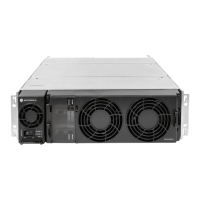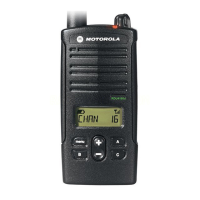Theory of Operation 1-9
• The heart of the SCM Module is the two Texas Instruments OMAP1710 processors. Each
OMAP processor contains an ARM Host and a C55 DSP processor. One of these OMAP
processor is dedicated to Receiver DSP operations, while the other OMAP provides for all
other operations, including the transmitter functions.
In general, the SCM controls the entire coordination of the base station/repeater functions.
Specifically, the SCM provides for the following functionalities:
- Contains and runs the preloaded base station/repeater software
- Manages inbound and outbound RF and Audio traffic
- Provides external speaker and microphone ports
- Provides an on-board USB port for local configuring, alignment and diagnostics via the
following applications:
- Customer Programming Software (CPS)
- Tuner application
- Repeater Diagnostic and Control (RDAC) software
- Online Help
- Provides an Ethernet port for IP site connectivity and remote RDAC
- Provides GPIO connectivity for third party controller interfaces
- Provides for analog base station/repeater audio connectivity
- Data and Control to the Receiver via the SPI and SSI respectively
- Data and Control to the Exciter via the SPI and SSI respectively
- Control of the PA’s set power via the SPI
- Generates the internal station reference
- Provides control of the front panel status indicators.
• The PA Module amplifies the low level modulated RF signal from the Exciter module. It then
delivers the amplified signal to the transmitter antenna port at a power level within the rated
power band of the base station/repeater, for transmission to the subscriber radios. In addition
to its primary task of amplification, the PA provides the following hardware functions for the
base station/repeater.
- Harmonic attenuation
- Inter-modulation attenuation (IMA) suppression
- VSWR detection
- RF power control (primary means)
- Self contained cooling fan and control circuit
- Meters for diagnostics
- Power rollback for temperature, VSWR, and voltage
- Self-Contained calibration (no field alignment needed for PA Module).
• The PS Module provides DC power to the Receiver, Exciter, SCM and PA Module via one or
more of the three DC output taps; 28.6 VDC, 14.2 VDC, and 5.1 VDC. It can also be used to
provide auxiliary power (14 VDC) to a number of third party controllers. Additionally, it can
operate in three different input modes:
- AC Input Only
- DC Input Only
- AC with Battery Revert.

